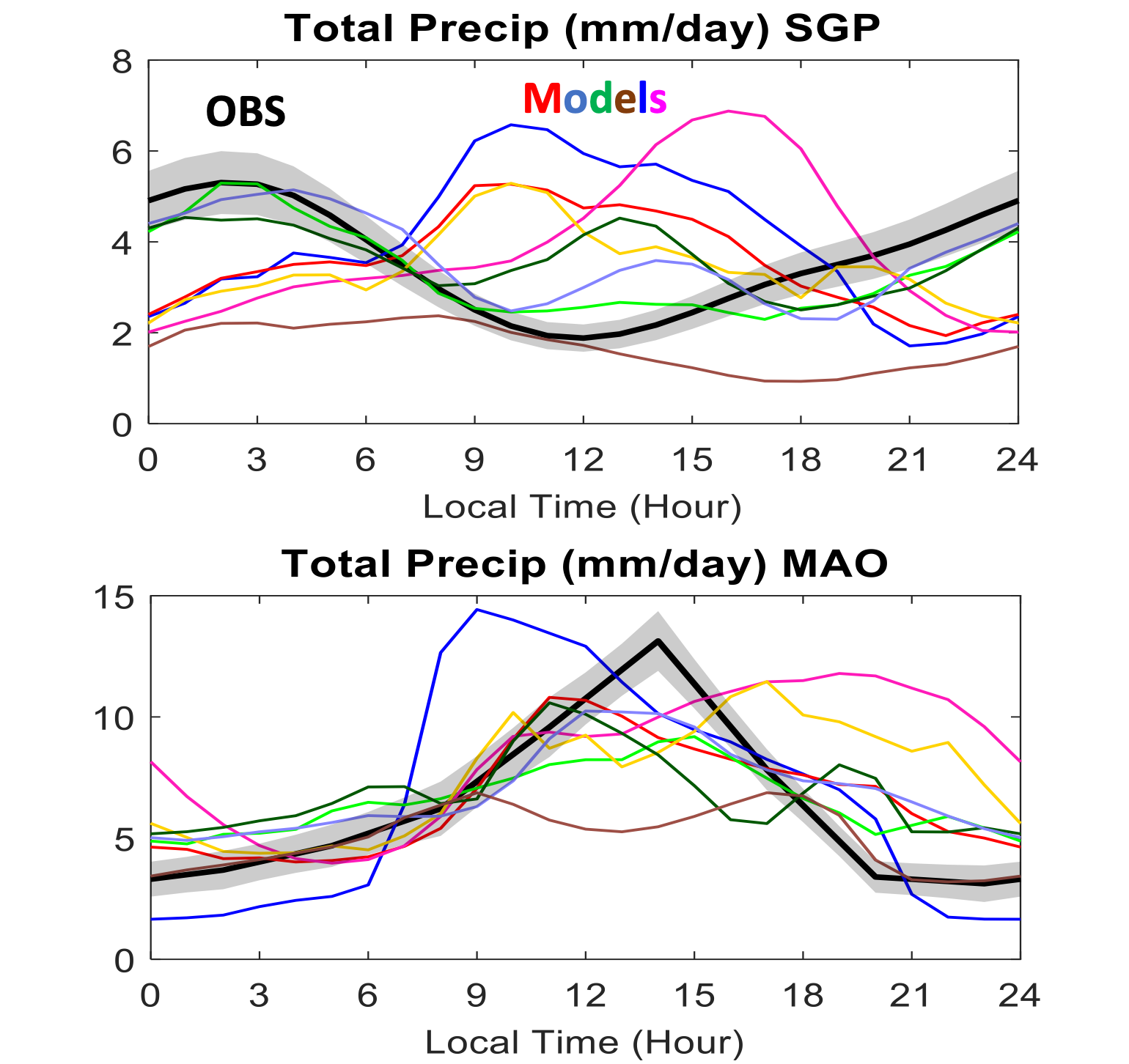Long-term single-column model intercomparison of diurnal cycle of precipitation
Submitter
Xie, Shaocheng — Lawrence Livermore National Laboratory
Tang, Shuaiqi — Nanjing University
Area of research
General Circulation and Single Column Models/Parameterizations
Journal Reference
Science
General circulation models (GCMs) have for decades exhibited difficulties in modeling the diurnal cycle of precipitation (DCP). This issue can be related to inappropriate representation of the processes controlling sub-diurnal phenomena like convection. In this study, 11 single-column versions (SCMs) of state-of-the-art weather forecast and climate models with multi-year ARM data are used to investigate the interactions between convection and environmental conditions, processes that control nocturnal convections, and the transition from shallow to deep convection on a diurnal time-scale.
Impact
The results from single-column models provide long-term statistical insights on which physical processes are essential in climate models to simulate the diurnal cycle of precipitation.
Summary
Eleven single-column models are used to study the diurnal cycle of precipitation and related physical processes over two selected continental locations, the U.S. Southern Great Plans (SGP) and the Brazilian Amazon (MAO). Most models produce afternoon precipitation too early, likely due to the missing transition of shallow to deep convection in the models. Many models cannot produce convection occurring at nighttime. Unified treatment of shallow and deep convection and the capability to capture mid-level convection are important for models to accurately capture the diurnal cycle of precipitation.


